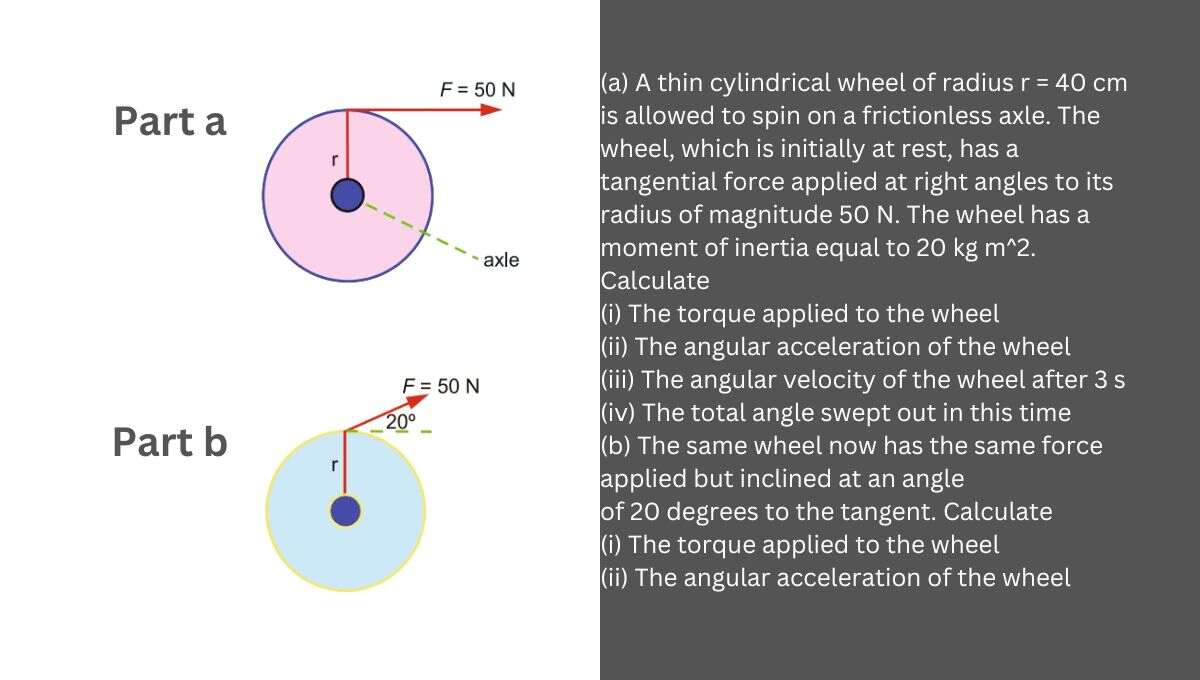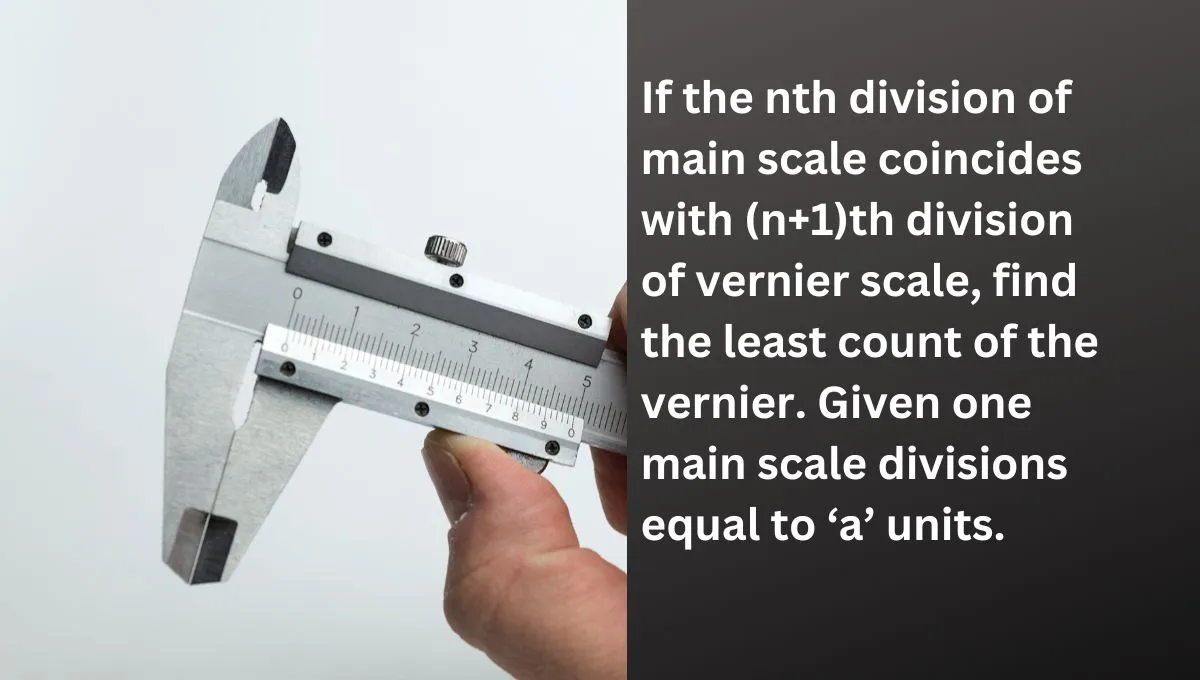(a) A thin cylindrical wheel of radius r = 40 cm is allowed to spin on a frictionless axle. The wheel, which is initially at rest, has a tangential force applied at right angles to its radius of magnitude 50 N. The wheel has a moment of inertia equal to ![]() .
.
Calculate
(i) The torque applied to the wheel
(ii) The angular acceleration of the wheel
(iii) The angular velocity of the wheel after 3 s
(iv) The total angle swept out in this time
(b) The same wheel now has the same force applied but inclined at an angle
of ![]() to the tangent. Calculate
to the tangent. Calculate
(i) The torque applied to the wheel
(ii) The angular acceleration of the wheel
Here is an informative table summarizing the solution for both parts (a) and (b):
| Part | Physical Quantity | Formula | Calculation | Answer |
|---|---|---|---|---|
| (a) | Torque ( | |||
| Angular Acceleration ( | ||||
| Angular Velocity ( | ||||
| Total Angle ( | ||||
| (b) | Torque ( | |||
| Angular Acceleration ( |
In this problem, a tangential force is applied to a wheel, and we need to calculate torque, angular acceleration, angular velocity, and total angle. This requires using fundamentals of rotational dynamics such as torque ![]() , angular acceleration
, angular acceleration ![]() , and angular velocity
, and angular velocity ![]() .
.
Explanation: Torque is a measure of the ability to rotate an object about an axis. It is expressed by the following formula:
![]()
where:
 is the radius of the wheel.
is the radius of the wheel. is the value of the force.
is the value of the force. is the angle between the force and the radius.
is the angle between the force and the radius.
Angular acceleration ![]() is the rate of change of angular velocity, which is obtained from the following formula:
is the rate of change of angular velocity, which is obtained from the following formula:
![]()
where (I) is the moment of inertia. Angular velocity ![]() can be found from the following formula:
can be found from the following formula:
![]()
Angular displacement (![]() ) is used for:
) is used for:
![]()
Solution:
(a) Part
Context: A thin cylindrical wheel has a radius ![]() on which a tangential force of
on which a tangential force of ![]() is applied perpendicular to its radius. The moment of inertia of the wheel is
is applied perpendicular to its radius. The moment of inertia of the wheel is ![]() . The wheel is initially at rest.
. The wheel is initially at rest.
Explanation and Solution:
(i) Torque applied to the wheel
Torque (![]() ) is calculated as:
) is calculated as:
![]()
![]()
Answer:![]()
(ii) Angular acceleration of the wheel
Using ![]() :
:
![]()
![]()
Answer:![]()
(iii) Angular velocity after 3 seconds
Using ![]() :
:
![]()
![]()
Answer:![]()
(iv) Total angular displacement
Using ![]() :
:
![]()
![]()
Answer:![]()
(b) Part
Now the same force ![]() is applied, but at an angle of
is applied, but at an angle of ![]() to the tangent. The moment of inertia of the wheel is
to the tangent. The moment of inertia of the wheel is ![]() .
.
Explanation and Solution:
(i) Torque applied on the wheel
Since the force is applied at an angle, the torque is given by:
![]()
![]()
First find the value of ![]() :
:
![]()
Answer:![]()
(ii) Angular acceleration of the wheel![]() :
:
![]()
![]()
Answer:![]()
Final Answer
(a)
(i) ![]()
(ii) ![]()
(iii) ![]()
(iv) ![]()
(b)
(i) ![]()
(ii) ![]()


![An infinitely long wire, located on the z-axis, carries a current \( I \) along the \( +z \)-direction and produces the magnetic field \( \vec{B} \). The magnitude of the line integral \( \int \vec{B} \cdot d\vec{l} \) along a straight line from the point \( (-\sqrt{3}a, a, 0) \) to \( (a, a, 0) \) is given by \[ \text{[} \mu_0 \text{ is the magnetic permeability of free space.] } \]](https://physicsqanda.com/wp-content/uploads/2025/04/resized-image-1-445x265.jpg)

